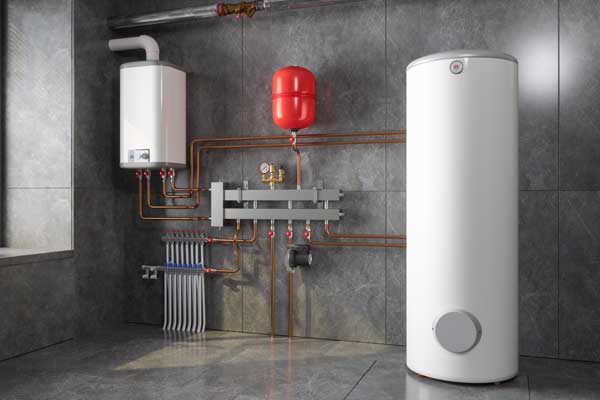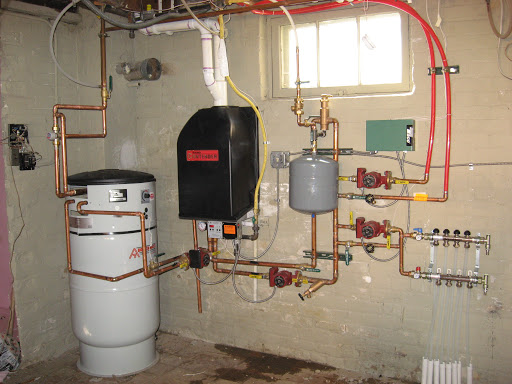Just about every person may have his or her own thinking on the subject of Water Heater Maintenance Tips You Can't Afford to Forget.

Warm water is vital for day-to-day comfort, whether it's for a refreshing shower or cleaning recipes. To ensure your warm water system runs efficiently and lasts much longer, regular maintenance is vital. This short article supplies practical suggestions and understandings on exactly how to keep your home's hot water system to prevent disturbances and costly repair work.
Intro
Maintaining your home's warm water system could seem difficult, yet with a few easy actions, you can guarantee it runs efficiently for several years to come. This guide covers whatever from comprehending your hot water system to DIY maintenance pointers and knowing when to contact expert aid.
Relevance of Maintaining Your Hot Water System
Regular upkeep not just expands the lifespan of your hot water system but also ensures it operates successfully. Disregarding maintenance can lead to decreased efficiency, higher energy bills, and even early failing of the system.
Indicators Your Warm Water System Demands Upkeep
Recognizing when your warm water system requires attention can prevent major issues. Look out for indicators such as irregular water temperature level, weird noises from the heating unit, or rusty water.
Flushing the Hot Water Heater
Flushing your hot water heater gets rid of debris buildup, enhancing effectiveness and prolonging its life.
Monitoring and Replacing Anode Rods
Anode rods protect against rust inside the container. Evaluating and changing them when worn is vital.
Complicated Problems Requiring Professional Help
Examples include significant leakages, electrical problems, or if your hot water heater is continually underperforming.
Regular Specialist Upkeep Advantages
Professional upkeep can consist of extensive evaluations, tune-ups, and ensuring compliance with safety criteria.
Checking and Adjusting Temperature Level Settings
Readjusting the temperature level settings makes certain ideal performance and safety and security.
DIY Tips for Maintenance
You can execute a number of maintenance jobs on your own to keep your warm water system in top problem.
Checking for Leakages
Routinely check pipelines and connections for leaks, as these can cause water damages and higher expenses.
Understanding Your Warm Water System
Before diving right into maintenance jobs, it's useful to recognize the standard components of your warm water system. Generally, this consists of the water heater itself, pipelines, anode rods, and temperature level controls.
Regular Monthly Upkeep Tasks
Routine month-to-month checks can help capture minor problems prior to they escalate.
Testing Stress Alleviation Valves
Evaluating the stress relief valve ensures it operates correctly and prevents extreme stress buildup.
Protecting Pipelines
Insulating hot water pipes decreases heat loss and can conserve power.
When to Call a Specialist
While DIY upkeep is beneficial, some problems require specialist knowledge.
Verdict
Regular upkeep of your home's hot water system is vital for performance, longevity, and expense financial savings. By following these ideas and recognizing when to look for professional assistance, you can make sure a reliable supply of warm water without unanticipated disruptions.
Water Heater Maintenance Tips
Test the TPR Valve
Shut off the power and the cold-water supply valve. Place a bucket under the pipe connected to the temperature-pressure-release (TPR) valve on the top or side of the tank. (This valve opens if the tank pressure gets too high.) Lift the valve’s tab to let some water out, then let go. If water keeps flowing, drain the tank partway, unscrew the old valve with a pipe wrench, and install a new one. Check the Anode Rod
Put a hose to the tank’s drain cock and let out a few gallons of water. Now fit a 1 1/16-inch socket onto the rod’s hex head on top of the heater (or under its top plate) and unscrew the rod. If it’s less than ½ inch thick or coated with calcium, buy a new one, wrap its threads with Teflon tape, put it back in the tank, and tighten securely. Use this segmented rod if headroom above the tank is limited. Drain the Tank and Wash Out Sediment
Drain the remaining water in the tank into the bucket, then stir up the sediment on the tank’s bottom by briefly opening the cold-water supply valve. Drain and repeat until clean water comes out of the hose. Close the drain cock, refill the tank, and turn its power back on. Adjust the Temperature
Find the temperature dial on the side of the tank and unscrew its cover. Adjust the dial to 120 degrees using a flathead screwdriver. For every 10 degrees the temperature is lowered, you can expect to save up to 5 percent in energy costs. Turn the water heater off or the thermostat down to its lowest setting if you plan to be away from home for more than three days. Insulate the Pipes
Buy some self-sticking 3/8-inch-thick foam pipe insulation that matches the pipes’ diameter. Slide the foam over the hot-and cold-water pipes as far as you can reach. Insulating the cold-water pipe prevents condensation in summer. Peel the tape and squeeze the insulation closed. If the pipe is 6 inches or less from the flue, cover it with 1-inch-thick unfaced fiberglass pipe wrap. https://www.thisoldhouse.com/plumbing/21016402/how-to-maintain-a-water-heater

I came across that review on How to Maintain a Hot Water Heater in a Few Simple Steps when browsing on the internet. Make sure you set aside a second to promote this article if you enjoyed it. We thank you for reading our article about Water Heater Maintenance Tips You Can't Afford to Forget.
Click Here